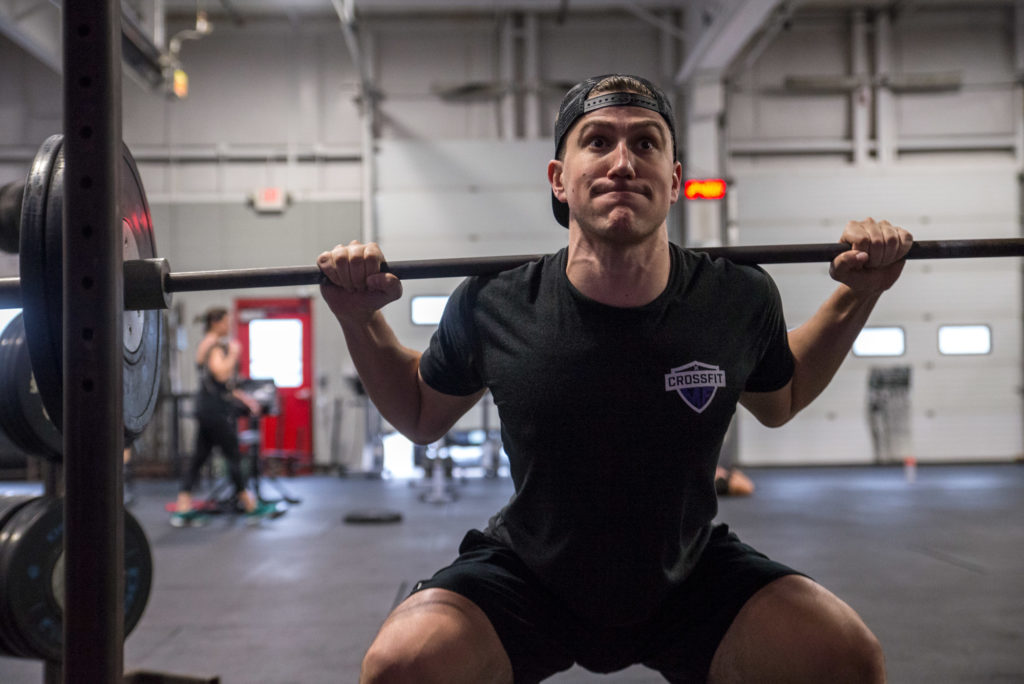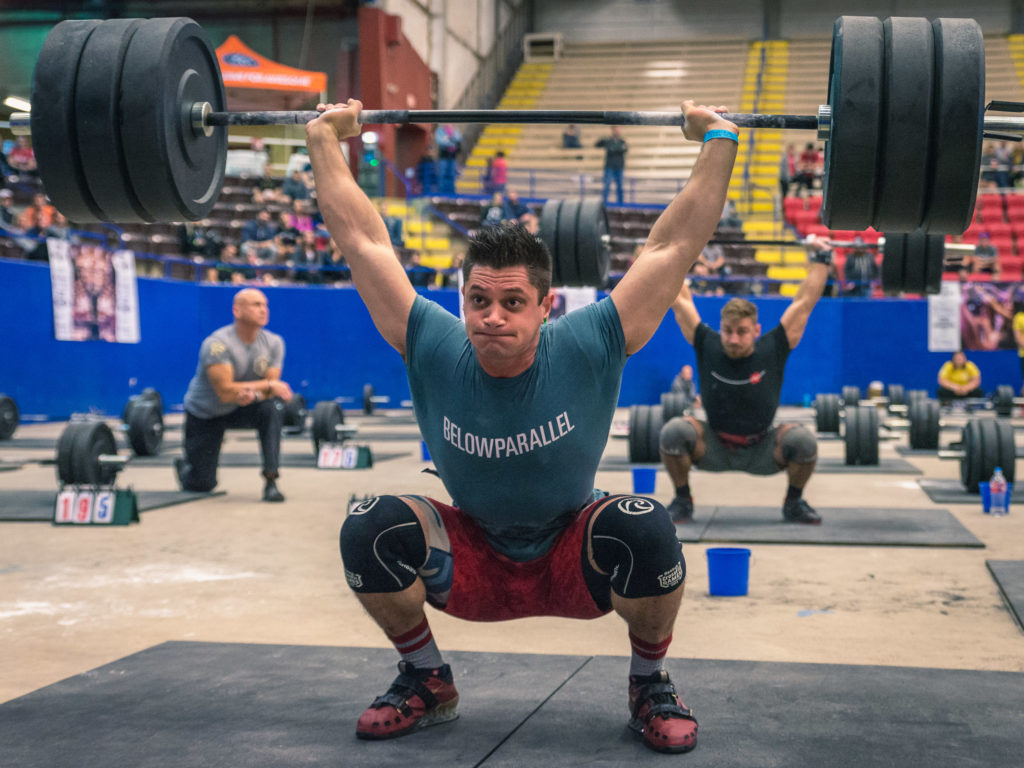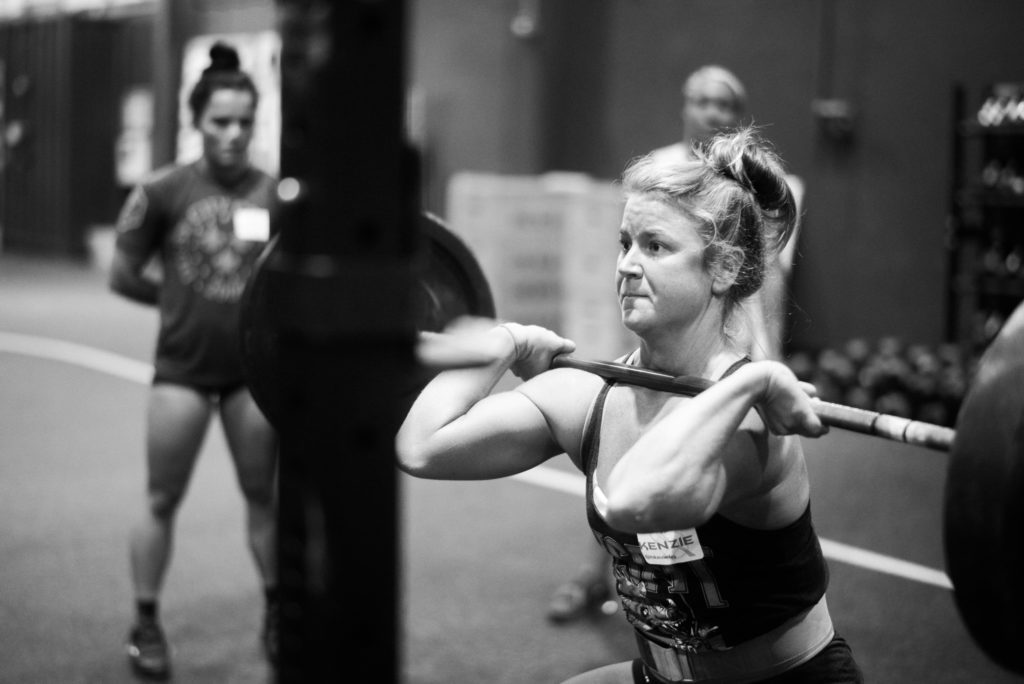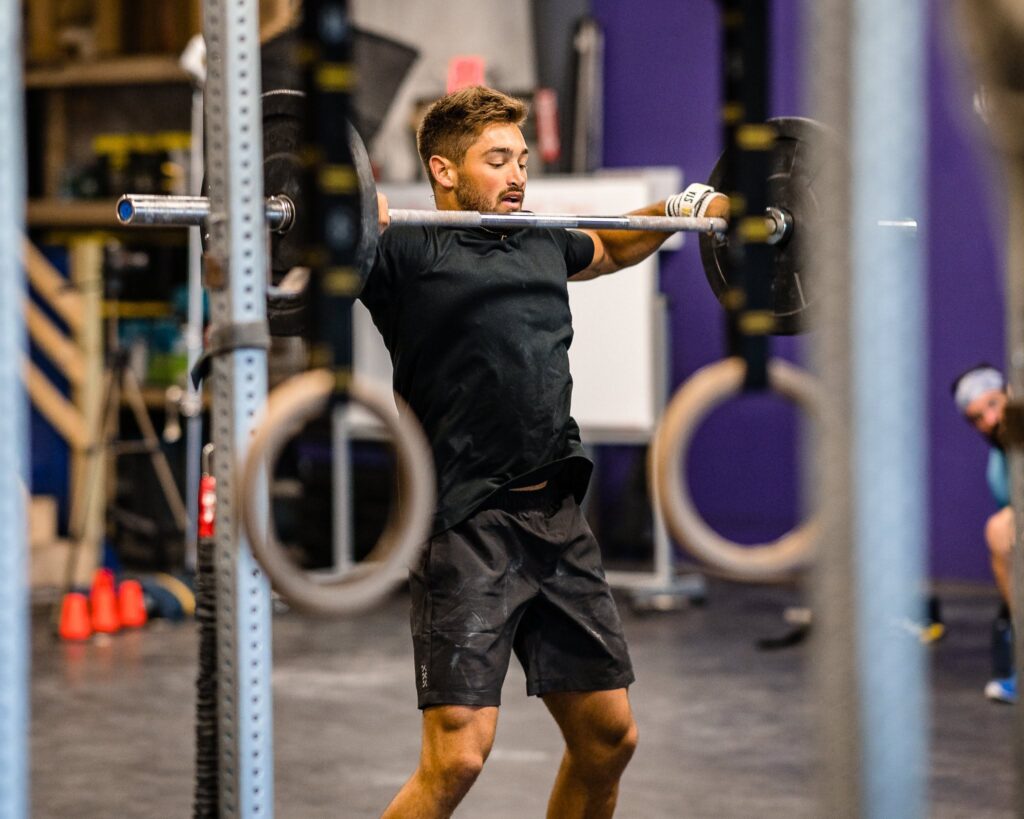Case Study – Lifting by Numbers Part 1 “The Back Squat”
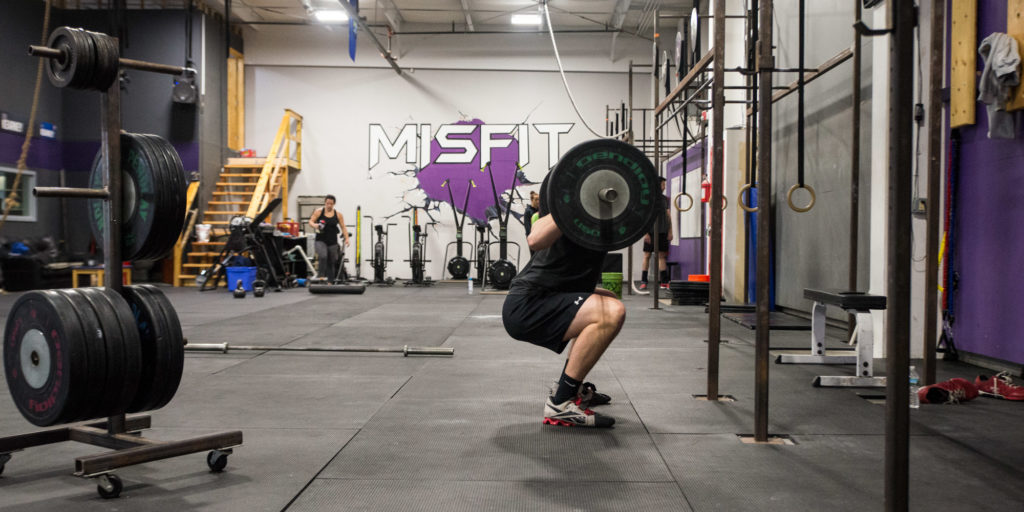
Ever wonder why some athletes are regarded as Squatters OR Pullers?
Why can some Overhead Press the house and others feel totally stuck? Why do some enjoy steady Bench Press progress while others have been at the same max for years?
Well, to pretend I have all the answers would just be that, pretending. However, my job as a coach is primarily to observe and report, so that’s what I’ll do. The following is nothing but observations and my thoughts in relation to some basic numbers.
Before starting this little experiment, I had a belief that there was a strong connection between the length of an athlete’s femur compared to their tibia and their ability to Squat heavy. In my mind, a longer femur would be a disadvantage due to distance traveled from standing to bottom position, among other issues. My question would be that, If I’m right, what long term solutions can I come up with for disadvantaged athletes, knowing we cannot change their skeletal structure?
In this case study I have asked numerous athletes, most of which are anonymous to me, to submit some simple anthropometric measurements along with recent PR lift numbers. My goal was to look for patterns of success within these numbers. These patterns by no means give us any conclusive rules of any kinds but could certainly lead to some interesting conversations.
In part 1 of this study I’m going to focus on simple observations involving the Back Squat. I’ll provide numbers to ponder and ideas about why the numbers could be so. The goal will be to look at patterns involving limb lengths and limb ratios/percentages, along with other measurements, in relation to lift numbers in the hope of finding mechanical advantages. I’ll also be highlighting some athletes I work with along the way as reference points to the patterns I have found. Before we get into the lifts, let’s get to know the athletes.
Here is what we are working with:
- 94 qualifying males
- 39 qualifying females
- Extreme outlying submissions were rejected and assumed to be inaccurate measurements, false lifts, or intentional sabotage
- All submissions were voluntarily self reported and the information was taken at face value to be true and correct to the best of the submitting athletes ability (with the exception of above outliers). You can view the submission guide here: https://www.youtube.com/watch?v=0hz575Jyh-M
- It is assumed that most, if not all participants, are at least somewhat experienced CrossFitters and/or weightlifters based on the fact that the submission form was located only on Misfitathletics.com
- All qualifying athletes had the following traits:
- Between the ages of 18-35
- Has 2+ years of experience in CrossFit or dedicated Weightlifting
- Their “PR” lift numbers occurred within the last 2 years
Our Average Male:
- Age 26.5
- 5’ 10.5”
- 189lbs
- 4 years of experience
- 71.5” Wingspan
- 23.5” Individual arm length
- 17.5” Femur
- 15.5” Tibia
- 20” Torso length
- Back Squat 379lbs
- Deadlift 449lbs
- Bench Press 270lbs
- Strict OH Press 173lbs
Our Average Female:
- Age 27.5
- 5’ 5”
- 146lbs
- 3.5 years of experience
- 66” Wingspan
- 22.5” Individual arm length
- 16” Femur
- 14” Tibia
- 19” Torso length
- Back Squat 234lbs
- Deadlift 278lbs
- Bench Press 139lbs
- Strict OH Press 104lbs
The Results:
In the Male “Heavyweight” group, the average Back Squat was 404lbs. Those who had a below average Squat in that field of participants had an average Femur length of 17.9” and Tibia length of 15.9”, which showed the Femur to be about 11.3% longer than the Tibia. Those who had an above average Squat had an average Femur length of 17.5” and Tibia of 16.0”, which showed the Femur to be only 10.9% longer. This alone doesn’t show a huge difference but it does show some possible correlation.
Here are some additional facts:
- The average Squat of all athletes being “below average” is 340lbs while “above average” is 452lbs
- The average height and weight of the lifters Squatting below average is 73” and 203lbs while above average is 71.5” and 210lbs (Shorter and heavier = Squatting more on average, who would have thought!?)
- Athletes of interest:
In the Male “Lightweight” group, the average Back Squat was about 360lbs. Those who had a below average Squat in that field of participants had an average Femur length of 17” and Tibia length of 15.2”, which showed the Femur to be about 11.2% longer than the Tibia. Those who had an above average Squat had an average Femur length of 17” and Tibia length of 15.2”, virtually identical to the below average group.
Here are some additional facts:
- The numbers appear to be the same due to rounding. It just so happened that the below average squatters Femur length average was rounded down while the above average was rounded up to the nearest tenth. So there was a slight bit of difference but it would be considered negligible
- The average Squat of all athletes being “below average” is 321lbs while “above average” is 402lbs
- The average height and weight of the lifters Squatting below average is 69.5” and 173lbs while above average is 68” and 177lbs (Again, with the shorter and heavier athlete having more success overall)
- Athlete of interest:
In the Female “Heavyweight” group, the average Back Squat was about 250lbs. Those who had a below average Squat in that field of participants had an average Femur length of 15.8” and Tibia length of 13.8”, which showed the Femur to be about 11.4% longer than the Tibia. Those who had an above average Squat had an average Femur length of 15.6” and Tibia length of 14.1”, which showed the Femur to be 11.1% longer than the Tibia. Again, not drastically different but possibly worth noting
Here are some additional facts:
- The average height and weight of the lifters Squatting below average is 64” and 156lbs while above average is 66” and 161lbs (This time we see the bigger athletes overall having the most success)
- The average Squat of all athletes being “below average” is 219lbs while “above average” is 282lbs
- Athlete of interest:
In the Female “Lightweight” group, the average Back Squat was about 223lbs. Those who had a below average Squat in that field of participants had an average Femur length of 16.6” and Tibia length of 14.6”, which showed the Femur to be about 11.4% longer than the Tibia. Those who had an above average Squat had an average Femur length of 15.7” and Tibia length of 14”, which showed the Femur to be 11.2% longer than the Tibia. Again, not drastically different but possibly worth noting
Here are some additional facts:
- The average height and weight of the lifters Squatting below average is 65” and 137lbs while above average is 64.5” and 139lbs (These numbers reflect the shorter, heavier athletes having success but not by a huge margin at all)
- The average Squat of all athletes being “below average” is 195lbs while “above average” is 255lbs
- Athlete of interest:
More to consider:
On both the Male and Female side we have different levels of “fitness participation” mixed in and by that I mean everything from experienced local affiliate members to CrossFit Games Athletes. While a lot of the averages are not that of a Regional qualifying athlete, they are still respectable and useful data points.
One glaringly obvious inequality in this study will be the variance in the athlete’s body weight. The advantage this provides is why we have weight classes in almost every weightlifting competition. In an effort to minimize the overshadowing this simple factor could cause, both the Males and Females were split into two weight classes. I did that by finding the average weight in both Male and Female athletes (provided above) and creating two separate groups above and below that marker. All athletes above the average weight fell into the “Heavyweight” category while those weighing less than the mean fell into the “Lightweight” category. As you can imagine, this helped level the playing field quite a bit and allows us to focus more on other factors leading to the athletes’ apparent success. Another notable point is that I chose to use averages (mean), instead of the midpoints (median), in the hope that it would help minimize the human errors that come from self reporting measurements. Some will over measure, some under. By using an average, I hope those errors balance out.
The role of “Experience”:
One of the questions that was asked to participants is “[What are your] total years of CrossFit or weightlifting experience?” I wanted to make sure the participants had at least two years of training to build their numbers up but also to see if “more training or experience” lead to bigger lift numbers, generally speaking. The problem with my question is that is opens up a can of worms with regard to a completely different topic for another day, what actually is training or experience? What EXACTLY counts? A simple example would be that a 20 year old Male could be on a rigorous Squat program focusing on his lifting for 2 solid years and have very big, impressive numbers. Where I myself, can confidently say I have been CrossFitting for almost 9 years and my lift numbers are below average in many areas. The focus of my training has not been lifting, nor do I enjoy it half as much as the conditioning/aerobic pieces I tend to do more often. So based on experience numbers, 2 years vs. 9 years, we essentially learn very little about what has actually gone into those years of exercise. I’ll still reference these numbers now and then through this study and other coming lifts in the form of averages, because I only gave you two outlying examples. The participants in this study are generally assumed to be on the competitive side as they typically follow Misfit Athletics, which promotes a very demanding training schedule with a solid daily dose of weightlifting.
Conclusion:
Overall I find three discussion points from the above data.
First, there MAY be some correlation between Squat capacity and the overall length of an athlete’s Femur. Furthermore, the ratio between the Femur and Tibia could be equally important.
Second, it seems, compared to the average, being slightly shorter in general along with having a few extra lbs is a recipe for success when talking about heavy Squatting.
Third, none of this is going to matter without putting the work in. Even though we did not specifically talk about volume or style of training, all the “athletes of interest” are damn near professionals in our sport and have been training consistently at the highest level for years. Therefore, if anybody had a chance of being much greater than average in lift numbers, it’s them.
